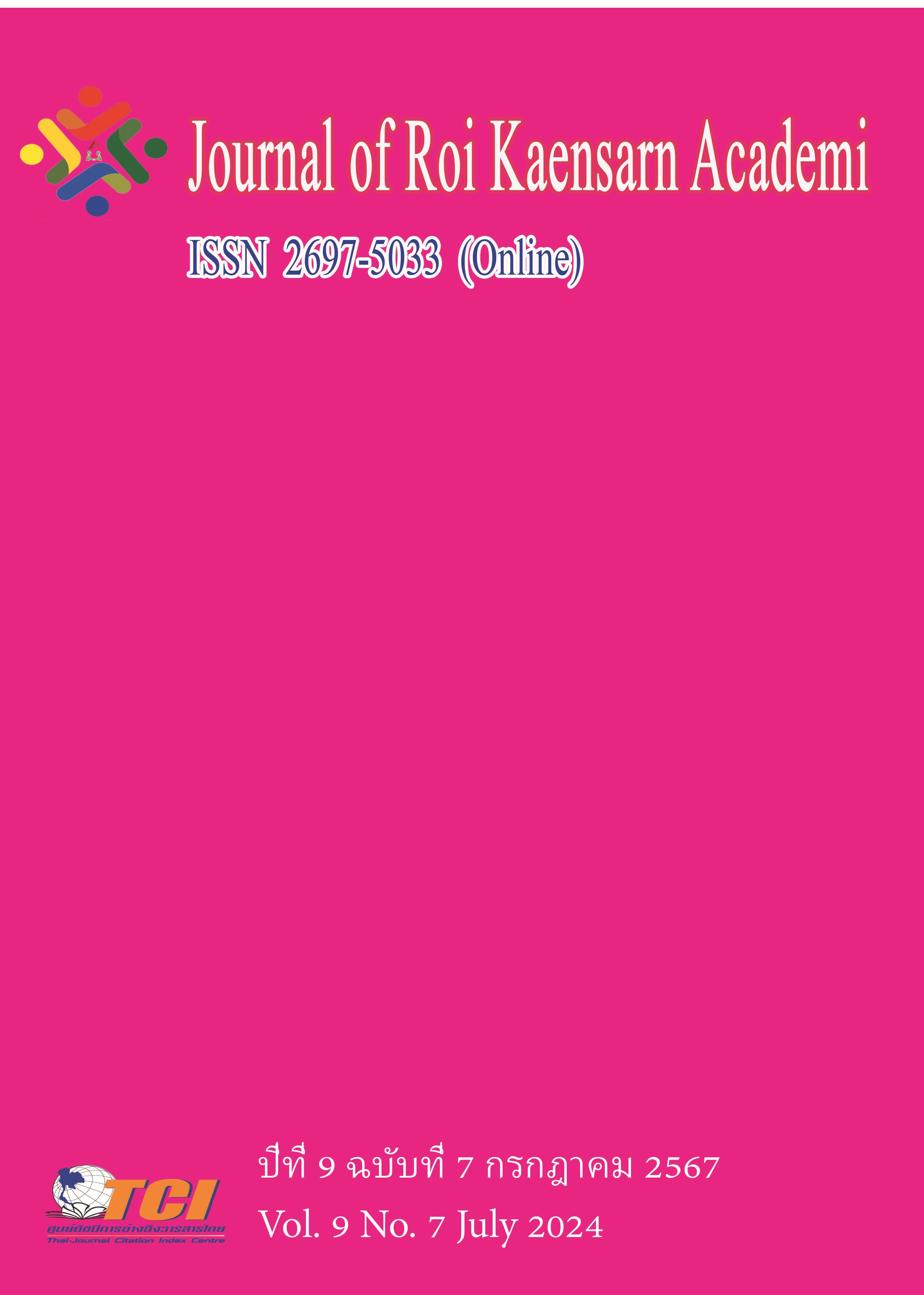Development Study of Chaozhou Gongfu Tea Culture Study Tourism Based on the SWOT-QSPM Model
Main Article Content
บทคัดย่อ
Tourism plays a vital role in today’s economy. Chaozhou has good tea culture tourism resources, and its characteristic Gongfu tea culture has the potential to develop study tourism. The purpose of this study is to provide strategic tourism industry development assessment and optimization strategies in order to promote the high-quality and sustainable development of Chaozhou Gongfu Tea Culture Study Tourism. This paper uses the SWOT-QSPM model and takes the development of Chaozhou Gongfu Tea Culture Study Tourism as a research case to analyze the opportunities and challenges faced by the development of Gongfu Tea Culture Tourism. The study used two techniques namely: Quantitative Strategic Planning Matrix (QSPM) and Strengths, Weaknesses, Opportunities and Threats (SWOT) to determine the necessary guidelines for tourism development in the city. The study first used SWOT to classify the different factors, QSPM is then used to prioritize various factors. The study found that the strategic choice for the development of Chaozhou Gongfu Tea Culture Study Tourism should be based on SO strategy, supplemented by the combination of ST strategy and WO strategy, and supplemented by WT strategy. Specific measures are: enhance the core competitiveness of Chaozhou Gongfu Tea Culture Study Tourism, implement new development concepts, and the successful application of tea culture as an intangible cultural heritage is an important strategic opportunity for Chaozhou Gongfu Tea Culture to comprehensively revitalize Chinese traditional tea culture; regain Chaozhou Gongfu Tea Characteristic cultural memory, create a Gongfu Tea culture study tourism brand with “Chaozhou impression”; improve Chaozhou’s public cultural service system, and achieve brand promotion and sustainable development of Chaozhou Gongfu Tea study tourism.
Article Details
เอกสารอ้างอิง
David, F. R. (1986). The strategic planning matrix—a quantitative approach. Long Range Planning, 102-107. https://doi.org/10.1016/0024-6301(86)90015-4
Ding, Y. (2014). Study Tour: A new comprehensive practical activity course. Chinese Moral Education, (09), 12-14.
Fan, D. (2024). An innovative study on the development of tea culture music. Fujian Tea, (06), 88-90.
Fan, Z., & Chen, C. (2024). Research on public experience perception of city wall ruins park based on comment data analysis. Chinese and Foreign Architecture, 1-11. https://kns.cnki.net/kcms/detail/43.1255.TU.20240614.1431.021.html
Fu, X., & Zhang, P. (2024). Coordination situation and motivation mechanism of rural tourism and rural revitalization in the Xi'an metropolitan area. Journal of Resources and Ecology, (03), 554-564.
Jin, R. (2017). The development of tea culture tourism from the perspective of holistic tourism. Journal of Jiyuan Vocational and Technical College, 16 (4), 3.
Li, J. (2019). From "Technology" to "Art": The contemporary evolution of Chaozhou Gongfu Tea. Master's thesis, Southwest University for Nationalities. https://link.cnki.net/ doi/10.27417/d.cnki.gxnmc.2019.000076
Liu, R. (2022). Innovative development of tea culture and study tours from the perspective of new liberal arts. Tourism and Photography, (19), 152-154. https://doi.org/CNKI: SUN:LYYS.0.2022-19-048.
Liu, Y. (2023). The integration and development of Chaozhou Gongfu Tea and cultural tourism industry. Tourism Overview, (06), 147-149.
Lu, C. (2023). Interpretation of the application for intangible cultural heritage of “Traditional Chinese Tea Making Techniques and Related Customs”. China Tea, 49-53. https://doi.org/CNKI:SUN:CAYA.0.2023-02-009.
Perdana, M. A., Rusmawan, P. N., Tyas, I. C., & Febrian, A. W. (2023). The development of cultural event strategy: SWOT analysis and QSPM approach. Jurnal Inovasi Ilmu Sosial dan Politik, 64-76. https://doi.org/10.33474/jisop.v5i1.20035.
She, S. (2024). Integrating intangible cultural heritage into neighborhood: Community aesthetic education practice of Chaozhou Gongfu Tea Culture. Popular Literature and Art, 4-6. https://doi.org/10.20112/j.cnki.1007-5828.2024.03.002.
Wang, X., & Li, X. (2019). Exploration of Chaozhou Tea Culture Tourism Development based on SWOT analysis. Journal of Hanshan Normal University, 46-50. https://doi.org/10.3969/j.issn.1007-6883.2019.01.009.
Weihrch, H. (1982). The TOWS matrix—A tool for situational analysis. Long Range Planning, 54-66. https://doi.org/10.1016/0024-6301(82)90120-0.
Zhang, B., & Ding, L. (2020). SWOT analysis of tea tourism research development and management: Take Wuyi Mountain as an example. Journal of Hunan Institute of Technology (Social Science Edition), 64-66.
Zhang, W. (2024). Promoting cultural inheritance and development to build a strong cultural city in the new era. Yunnan Daily, 006.
Zhang, X. (2024). "Tea Life" in the intangible cultural heritage tea space. China Culture Daily, 004.
Zhou, W. (2022). “Traditional Chinese tea-making techniques and related customs” included in the representative list of human intangible cultural heritage. Government portal website of the Ministry of Culture and Tourism. Online. Retrieved October 15, 2023, from https://www.mct.gov.cn/whzx/whyw/202211/t20221129_937816.htm.

